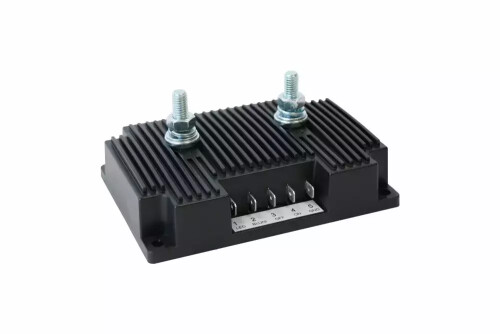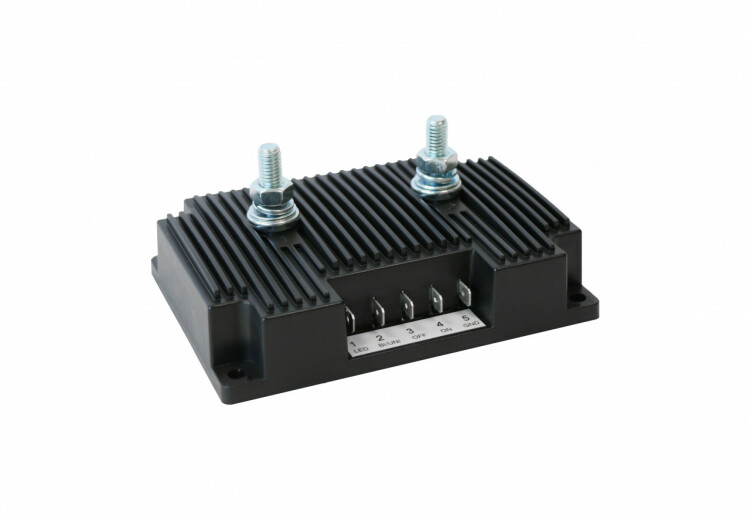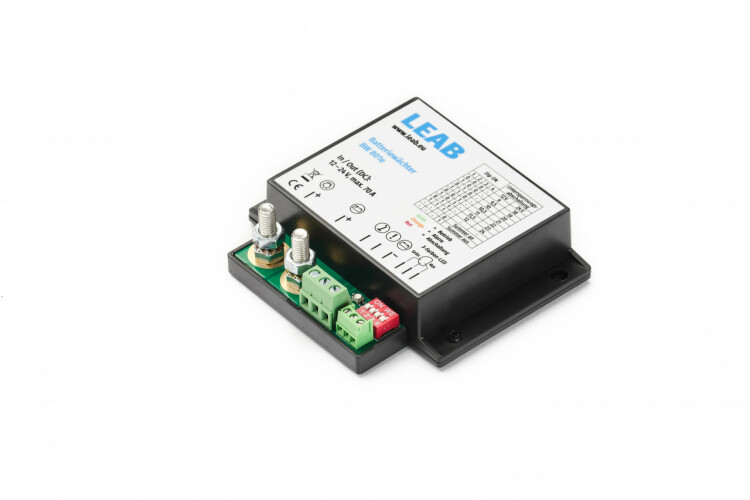
The CDR 12 V/24 V charging current distributor can be used bi-directionally and unidirectionally.
Relays are electromagnetic or electromechanical switches used to switch circuits on, off and over. They also play an important role in the field of mobile power supply: For example, they create connections if the auxiliary battery is to be charged by the alternator via the starter battery. Or vice versa, if the starter battery is supplied via the auxiliary battery by means of a charger.
Vehicles with extensive additional equipment, such as BOS and service vehicles or motor homes, usually require one or more additional batteries to cover the high power demand caused by additional consumers. And it is essential that the batteries are always available, i.e. never completely discharged, to ensure, for example, that cooling devices, lighting or welding equipment can function without interruption.
To be able to recharge via the vehicle's alternator, auxiliary batteries are electrically connected to the starter battery. The problem: If the engine is switched off when the vehicle is stationary, the energy can continue to flow unintentionally from the vehicle battery via the auxiliary battery towards the consumers. And this continues until the vehicle battery is empty.
So-called isolating relays or charge distribution relays are used to prevent this. This is an inexpensive and reliable solution for new vehicles without generator management and for retrofitting.
When the starter battery is actively charged - for example by the alternator while the engine is running - the LEAB charge distribution relays connect the auxiliary batteries so that they are also charged. As soon as the starter battery is no longer being charged, the relay disconnects the connection between the two batteries, thereby preventing unintentional discharge. The LEAB charge distributor relays detect independently whether a battery is being charged by the level of voltage at the input and automatically control the connection or disconnection accordingly. A control line from the vehicle is not required.

The CDR 12 V/24 V charging current distributor can be used bi-directionally and unidirectionally.
LEAB’s isolating relays are available in two versions, the unidirectional EDR (Electronic Distribution Relay) and the optional bidirectional CDR (Control Distribution Relay). Unidirectional in this context means that the relay only monitors the voltage at one input and switches through in one direction.
The CDR, on the other hand, can optionally evaluate the voltage at both battery terminals and then connect the batteries together - i.e. act in both directions. An example: The 230 V battery charger is connected to the auxiliary battery and the starter battery is to be charged as well, but at the same time both batteries are to be recharged by the alternator while driving.

The EDR electronic isolating relay is suitable for charging two batteries simultaneously.
| EDR | CDR | |
|---|---|---|
| Nominal voltage | 12 V/24 V | 12 V and 24 V |
| Permissible current | 75 A/50 A | 200 A (12 V)/100 A (24 V) |
| Voltage measurement | Input only | Input and output |
| Switching through | Unidirectional | Option of uni-/bidirectional |
| Switching function | Relays | Transistors |
| Indicator | LED in housing | External LED can be connected |
| Additional functions | Emergency start, battery disconnection, battery interconnection, option of uni/bi operating modes |
The LEAB EDR has a high-quality electromechanical relay and is available for 12 V on-board power supply systems (EDR 1275) and for 24 V networks (EDR 2450).
The LEAB CDR operates completely without mechanical components and is therefore wear-free, can be used universally for 12 or 24 V on-board power supplies and offers a range of additional functions.
Email us at anfrage@leab.eu or contact us for a no-obligation consultation on charging current distributors.

The battery isolator CDR is now available with a new design and well thought-out practical new features that make using the device much easier and better.

In many cases, a deep discharge can damage the battery so that it can no longer be charged or used - a low-voltage protection can reliably prevent this.